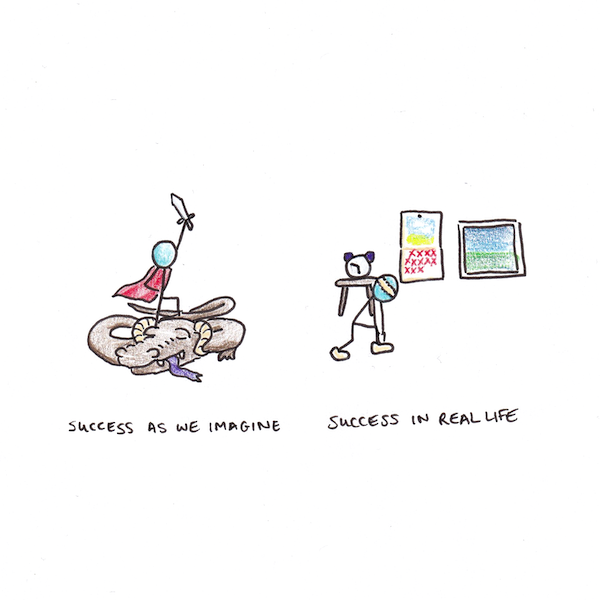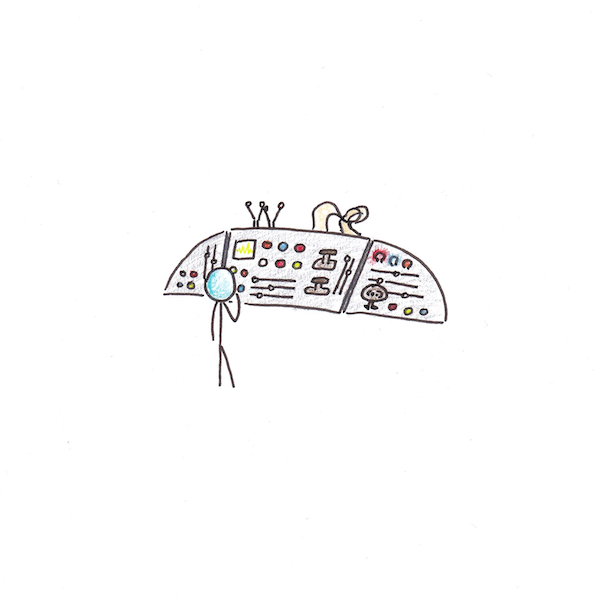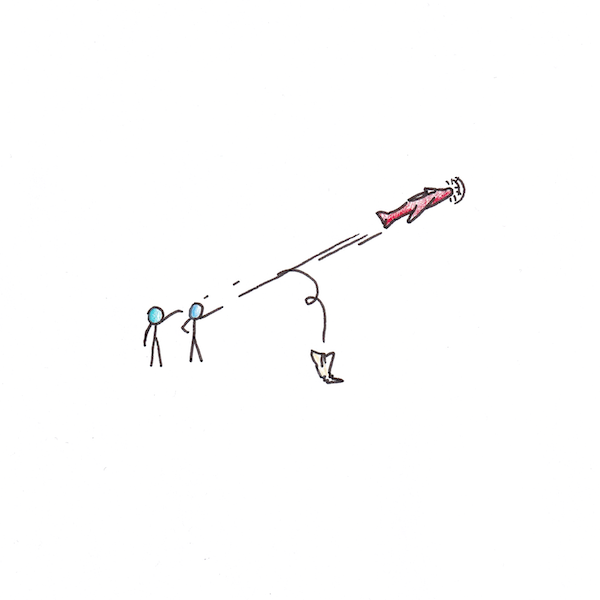Next week, I’ll be reopening my course, Make it Happen!, for a new session. This course is about mastering the invisible systems that help (or hinder) you in making progress on your goals. Before that, I’ll be sharing a free four-part lesson series. Let’s get started…
There are two dominant stories about how success happens. The first is the one you’ve seen in movies and television. A challenge arises, and you rise to the occasion. There’s a flash of insight that triggers of a heroic effort, followed by victory.
The second story is a lot more boring. You start saving in your mid-twenties and have a hefty retirement account by the time you’re sixty-five. You start a business, grow it steadily for ten years and eventually you’re rich. You work out every day for years and you’re in great shape.

The first story is exciting. The second is downright dull. Success in the second case is largely invisible because it doesn’t feel like anything. It’s just invisible systems working in the background to create a result. Despite the numerous retellings of the first story, it’s the second that is far more common. Success is boring, not exciting; cumulative, not sudden; systems, not inspiration.
Which Story Do You Want to Tell?
Inspiration can get you started. But it’s not the mechanism for getting results. Instead, it’s the boring, invisible chugging away of your background processes that make progress.
On one side, this makes the problem of success much easier. If we don’t need movie-worthy moments of inspiration to make progress, then a lot of mundane goals can really be achieved. Getting in shape, starting a business, building wealth—none of these need an extreme flash of motivation.
But, on the other side, this makes the problem harder. Inspiration, if not always there when we want it, at least is simple. Systems that operate in our peripheral vision often aren’t. Consider some of these questions of design:
- Should you go to the gym every day or three times per week?
- If you have multiple goals, should you work on them in parallel, or sequentially? How long should you focus on one before switching to the other?
- Should you set aside time to plan out your business? Or is that just procrastination and you should really just get started?
- When you feel burned out, three months into your plan should you take a break? Or keep going and risk exhaustion?
Unlike inspiration, which assumes that the surge of motivation will overcome obstacles, these are not easy questions. Each of them is about an underlying system—habits, attention, research, energy—that has numerous settings that need to be tweaked. Success results from choosing the right settings for these systems, but the correct choice is rarely obvious.

Motivation as a System
Trying to paint the picture of success as being inspiration vs systems is itself an oversimplification. The reason is that motivation is part of the very systems I’m trying to contrast it with.
As I’ve documented in my Complete Guide to Motivation, our motivation is itself under the push and pull of numerous invisible factors. For instance:
- To take action consistently, those actions need to be reinforced. Unfortunately a lot of work on our goals is hard, and so we get steadily de-motivated with time.
- Feelings of control greatly influence your motivation. Many of the goals we struggle with are really introjected, external motivators. As a result, they motivate us only inconsistently.
- We’re much better at rationalization than rationality. The reasons for our behaviors are often not things we can inspect easily, so we struggle to diagnose why our motivation is getting sapped from self-reflection alone.
If you can stand back, and view your motivation itself as being a kind of system, you can start to ask yourself how you can make tweaks to guide it in the direction you want.
Success is Invisible
Whether you want to achieve great ambitions, or simply make modest improvements, the factors that create success are largely invisible. Instead of grand epiphanies leading to a torrent of action, it’s subtle systems that accumulate results over time.
Faced with this reality, the attitude we need is curiosity, not just courage. We need to try to understand ourselves, both when we’re at our best and when we fail to do what we say we should. Success is largely the product of careful design, not heroic effort.

Make it Happen! is a six-week course which offers daily lessons giving you new insights into the invisible systems that drive your results. Through the course, you’ll learn a framework for making more consistent progress on any goal you’ve wanted to set, whether it be for your health, learning or business. I’ll send out registration information next week, in the meantime, I hope you enjoy the free lesson series!


 I'm a Wall Street Journal bestselling author, podcast host, computer programmer and an avid reader. Since 2006, I've published weekly essays on this website to help people like you learn and think better. My work has been featured in The New York Times, BBC, TEDx, Pocket, Business Insider and more. I don't promise I have all the answers, just a place to start.
I'm a Wall Street Journal bestselling author, podcast host, computer programmer and an avid reader. Since 2006, I've published weekly essays on this website to help people like you learn and think better. My work has been featured in The New York Times, BBC, TEDx, Pocket, Business Insider and more. I don't promise I have all the answers, just a place to start.